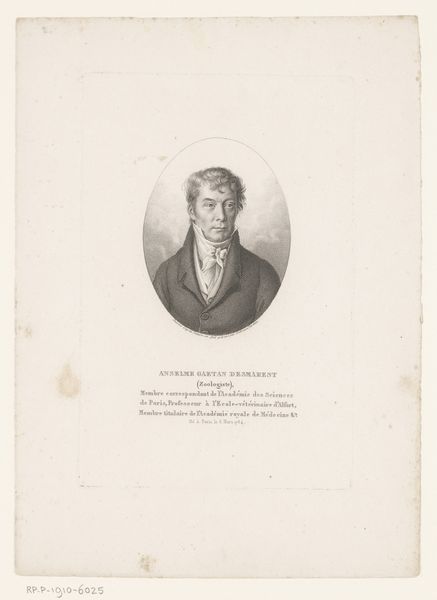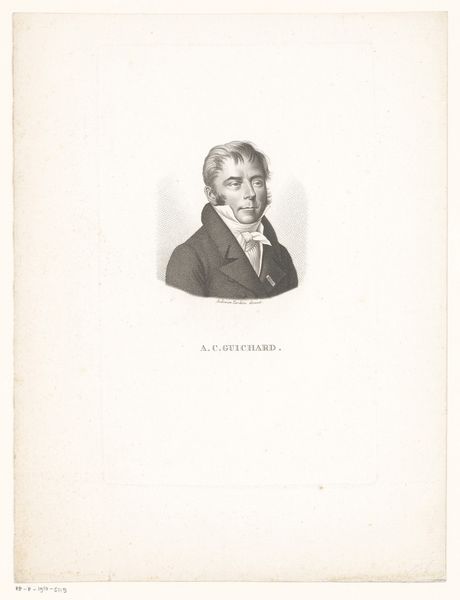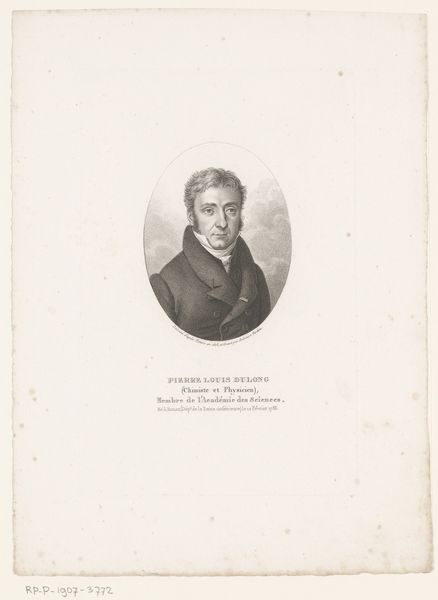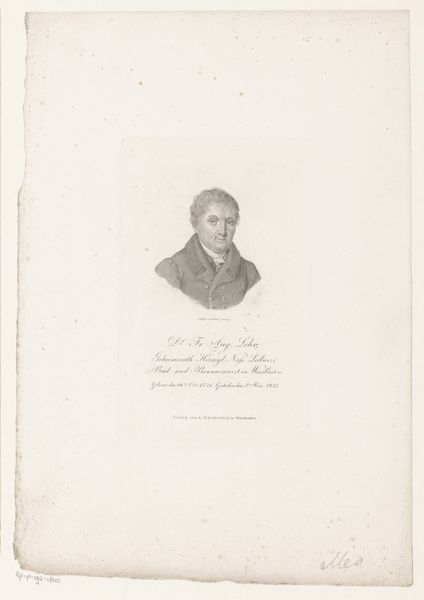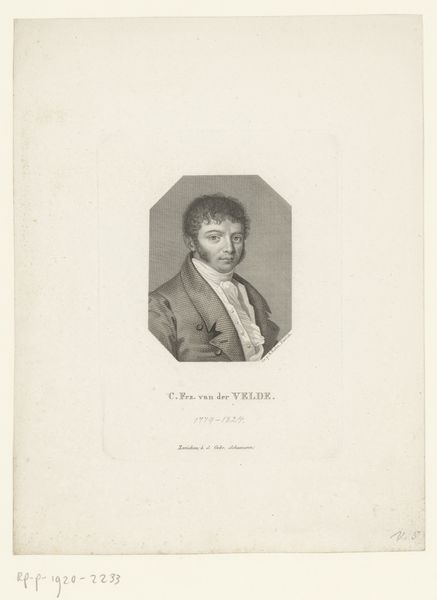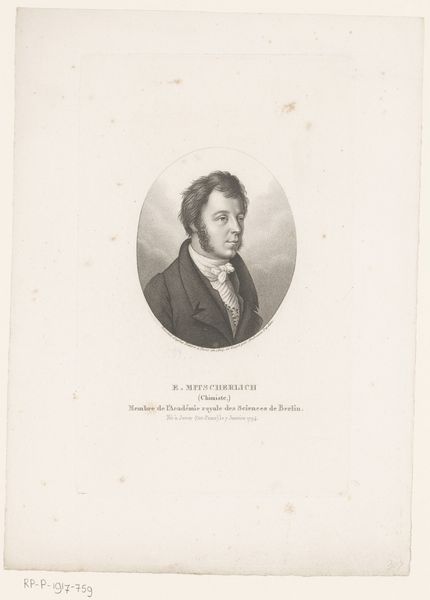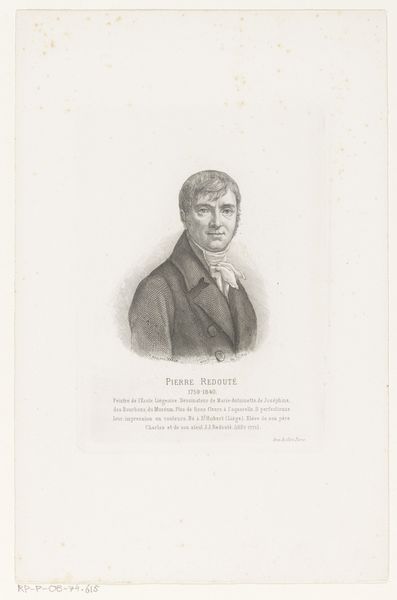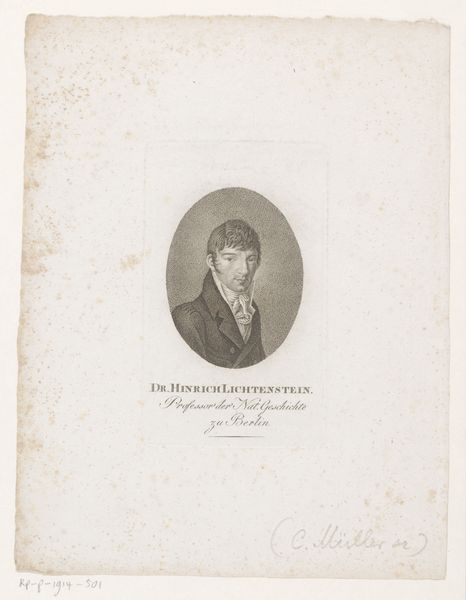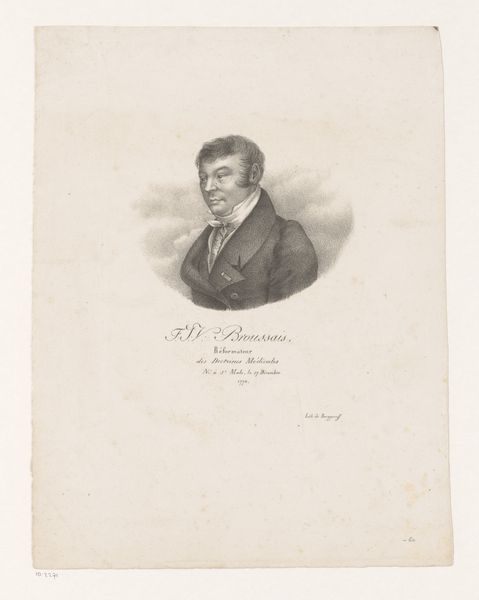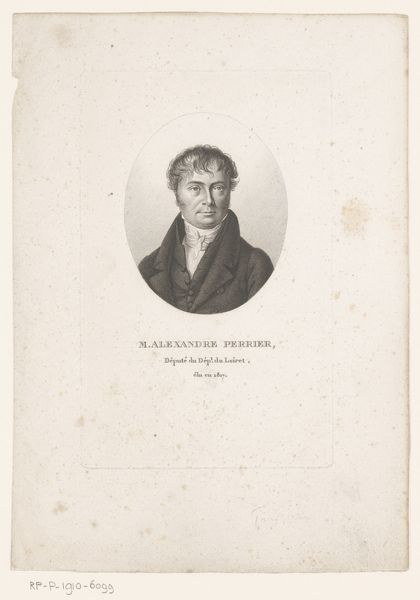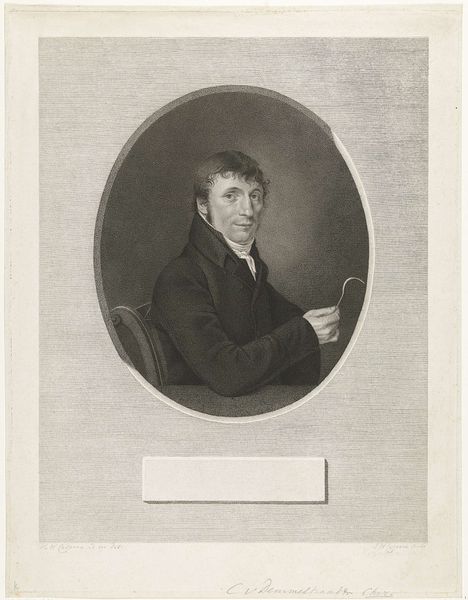
print, engraving
#
portrait
#
neoclacissism
# print
#
engraving
Dimensions: height 229 mm, width 139 mm
Copyright: Rijks Museum: Open Domain
Curator: The rendering feels so stark, somehow. The starkness accentuates every wrinkle, every bit of asymmetrical in his face. It communicates a life lived. Editor: We're looking at a print, an engraving to be exact, of François Guillaume Jean Stanislaus Andrieux. This portrait was created by Ambroise Tardieu sometime between 1820 and 1828. And yes, the style clearly speaks to Neoclassicism. Curator: The oval format, too. It makes him feel very…contained, like a specimen under glass. Is that intentional? Editor: Absolutely, yes, containment was a typical framing approach for neoclassical portraits intended for wider public distribution, suggesting a man of order and reason available for civic inspection. Andrieux was a dramatist and a professor. He’s depicted in his public role, which in a post-revolutionary era would've been deeply considered. Curator: It’s fascinating how the simple act of choosing to immortalize someone in this way transforms him into a symbol of something larger. Even his slightly rumpled appearance is absorbed and read through that lens. Editor: He wasn’t just anyone, after all. The inscription indicates he was a member of the Académie Française and a professor at the Collège Royal de France. These were powerful symbols of cultural authority at the time, embodying the highest echelons of French intellectual life. Curator: It's an odd contrast. His rumpled cravat gives him a touch of relatable humanity, undercutting the otherwise austere formality. Does this lend itself to reading the portrait more sympathetically? Editor: Precisely. In terms of its effect on a contemporary audience, it possibly suggested a blending of established order and individual character that resonated with a society undergoing its own dramatic transformations after the Revolution. A deliberate choice, I imagine. Curator: He almost feels like a transitional figure, clinging to tradition but showing signs of what’s to come. Editor: It highlights how art in public institutions helped negotiate and normalize those transitions. Thank you for highlighting some of the visual complexities; they make me think even more deeply about this portrait's power. Curator: A pleasure. Now I will need to spend a few weeks investigating 19th century cravat styles and their meanings!
Comments
No comments
Be the first to comment and join the conversation on the ultimate creative platform.
